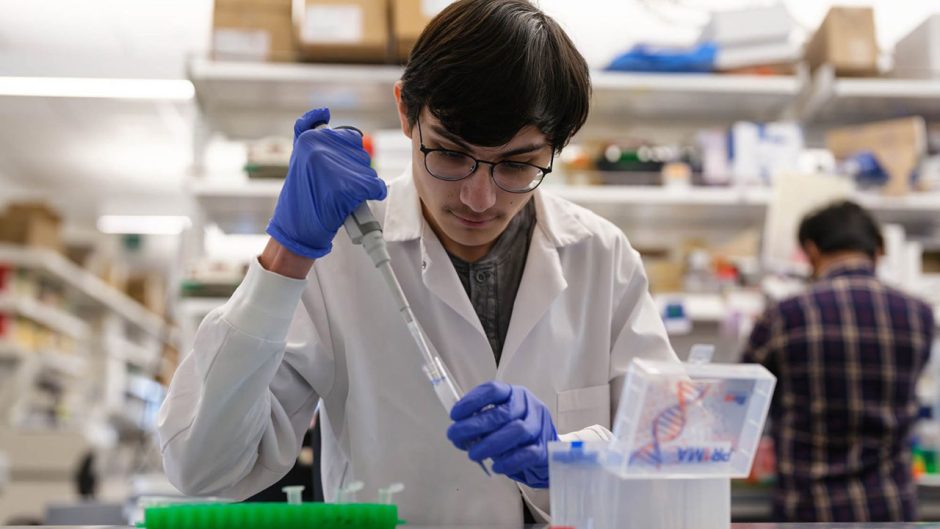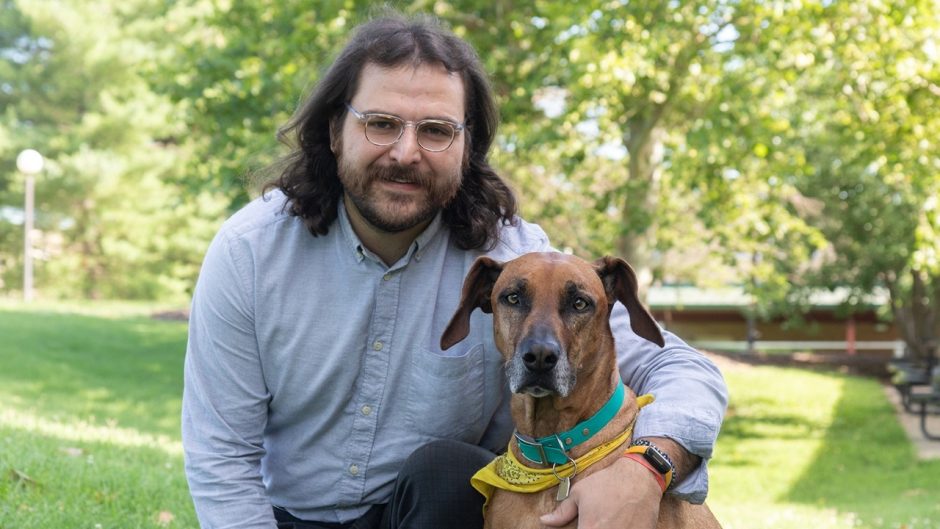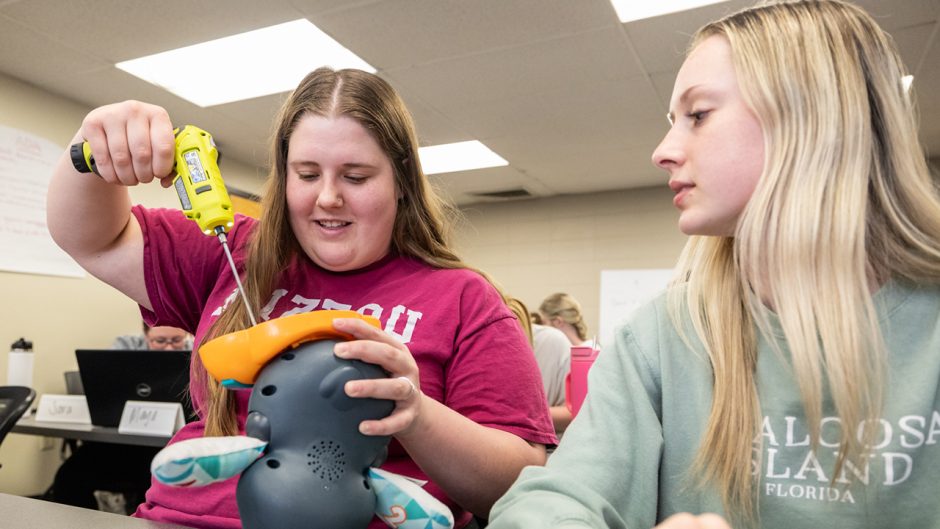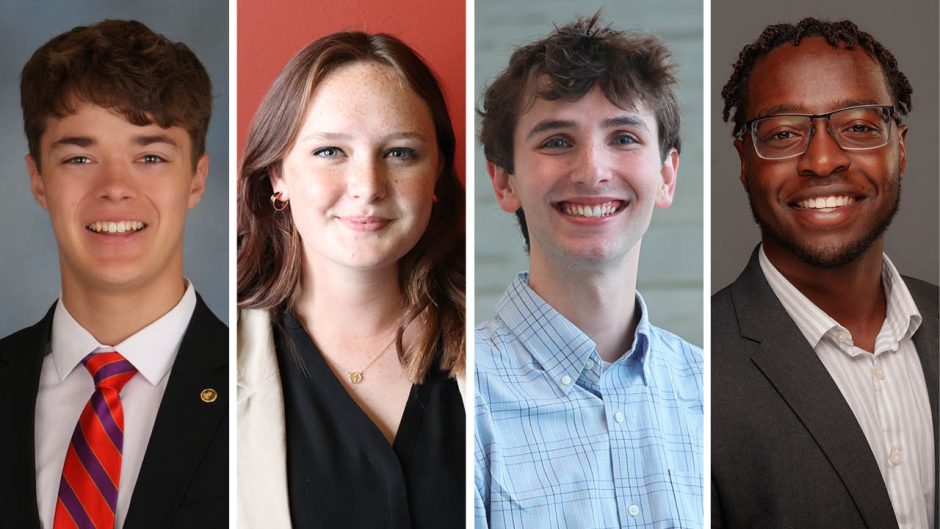Dec. 6, 2021
Contact: Kenny Gerling, gerlingk@missouri.edu
Trevontae’ Haughton remembers first seeing Spot, a four-legged doglike robot created by Boston Dynamics, on YouTube. Now as a junior information technology major at the University of Missouri, Haughton gets to work with the real thing every day.
Mizzou is one of the only universities in the country to make Spot robots available even to undergraduates. Haughton is part of a team of students and faculty who are finding innovative ways to use Spot for everything from safely monitoring powerplants to performing in Marching Mizzou halftime shows.
Learn more about Haughton, Spot and how undergraduate programs are encouraging students to follow their passion for research.
For those who don’t know, what is Spot?
Its species, if you will, is a Boston Dynamic Spot. We have four Spots in total on campus. There’s the Mizzou Spot (that’s what we call it), one unnamed Spot, and also Steve and Bucky. Mizzou bought one Spot and the other three were purchased by Ameren — we’re working with them to find new ways to implement Spot into their facility.
How did you get involved with the program?
After the spring semester ended, I went home to St. Louis and was working a regular grocery store job. I knew I needed to do something else, so I asked Dr. Terrell Morton [assistant professor of identity and justice in STEM education] if he had any opportunities for summer research. He told me about the Missouri Louis Stokes Alliance for Minority Participation, a program designed to help minority students get involved in undergraduate research.
I sent over my resume, transcript and research interests — which included cybersecurity, robotics, digital media design and anything that involves technology. Since I named robotics, I was paired with Dr. Dale Musser [associate teaching professor in the Department of Electrical Engineering and Computer Science and the IT Program] who works with Spot. I also have an in-person mentor, Kristofferson Culmer [assistant professor of professional practice for the IT Program].
What are some of Spot’s applications?
If you can imagine it, it can probably do it. You could mount a gas leak or carbon monoxide sensor and have it run through a facility autonomously, for example. With Spot having a doglike structure, it can also go through all sorts of terrain — walk up stairs, crawl into places you wouldn’t think it can go, and carry payloads of up to 30 pounds.
In California, they use it during fires. You bring a Spot in, put a camera and speaker on it, and just have the robot run around and search for people. It’s not a replacement for humans, but it is a substitute in those times you wouldn’t want someone risking their life.
What’s the focus of your research?
When I first came in, I saw these people around me doing all sorts of crazy projects. But I just took a step back and realized that one of the most important things was kind of skipped over when it comes to Spot. For example, I got the chance to pick up three more Spots from Ameren’s power plant about an hour away from here. When I brought them back and opened the box, I realized it was only Spot and the controller. There were no directions. Even when I was trained, it was all word of mouth. There was no paperwork, no instructions. So my research involves creating guides, checklists, manuals and videos so the next person in the lab who wants to operate Spot can get trained properly and be comfortable using it.
What projects are other undergraduate researchers working on with Spot?
We have a guy named Jeremy Breese, and he’s working on having Spot respond to voice commands, detect humans and follow them autonomously. We also have Cj Harris and Stephen Bowen — those two are working on a mobile application to condense the controlling of Spot, since the controller is big and bulky. The people I work with push me every day to work harder, and they’re doing such cool things.
How do people react when meeting Spot for the first time?
Sitting in the lab working all day, you want some fresh air. So why not take your robotic dog for a walk? When we take Spot out, people ask to pet it all the time, but we advise them not to for their safety. People also ask if it barks. It’s possible, we just have to mount a speaker on it and input some sort of bark. People also want to know what it can do, and I just tell them it can do whatever you want it to do. I tell them my personal experience and give them a little insight into how it’s used around the world.
Get involved
Students who are interested in working with Spot can contact Kristofferson Culmer in the IT Program. For more about the many research opportunities at Mizzou, visit the Office of Undergraduate Research.




